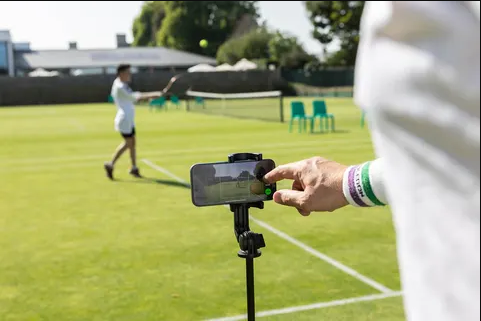In an era where technology is transforming nearly every aspect of daily life, the world of tennis is experiencing its own digital revolution. Across cities and towns, amateur and professional players alike face a common problem: a shortage of qualified coaches. Whether due to high costs, limited local availability, or the sheer demand of the sport, many aspiring tennis players have struggled to find personalized guidance. But thanks to advances in artificial intelligence, this gap is now being filled in unprecedented ways.
AI-powered coaching tools are rapidly emerging as viable alternatives to traditional human instruction. From smart sensors attached to rackets to sophisticated mobile apps, technology can now analyze a player’s swing, footwork, and even mental decision making during matches. These systems provide real-time feedback, correct errors, and suggest drills tailored to the player’s unique strengths and weaknesses. For example, AI can track the angle and speed of a serve and immediately recommend adjustments that might take years to perfect under a human coach.
Experts say that while AI cannot fully replicate the mentorship, motivation, and strategic intuition of a seasoned coach, it offers several distinct advantages. “AI allows for constant, data driven feedback that is personalized to each player,” explains Dr. Maria Chen, a sports technology researcher at Stanford University. “It can detect patterns and areas for improvement that even professional coaches might miss. For players without access to high-level coaching, it’s a game changer.”
Startups and tech companies have been quick to capitalize on this trend. Products like virtual tennis simulators use augmented reality to mimic competitive match conditions, while AI-driven apps offer personalized training regimens based on the player’s performance history. Some programs even incorporate mental coaching, using AI to help athletes develop focus, resilience, and decision-making under pressure.
The impact is already being felt on courts around the world. In countries with fewer tennis academies or high demand for lessons, players are using AI to practice independently while still receiving expert-level guidance. Parents, too, are finding AI tools useful for monitoring and nurturing their children’s tennis progress without the constant need for an in-person coach.
However, the rise of AI in tennis coaching also raises questions. Critics worry about over-reliance on technology and the potential loss of human mentorship, creativity, and nuanced strategy that only a live coach can provide. “AI can help improve technique and consistency,” says former professional tennis coach Andre Simmons, “but it can’t inspire, adapt emotionally, or develop a player’s intuition in the way a human coach can.”
Despite these concerns, the trend shows no signs of slowing. As AI technology becomes more affordable, accurate, and sophisticated, it is likely to play an increasingly central role in tennis training. For many players, the era of waiting for the perfect coach may be over. Whether learning to perfect a backhand, improve footwork, or simulate high-pressure match conditions, AI is stepping in to ensure that the lack of a human coach is no longer a barrier to improvement.
Ultimately, the rise of AI in tennis coaching is a microcosm of a larger shift in sports and education, where technology augments human expertise, making high-quality training accessible to anyone with a device and determination. While nothing can fully replace the value of personal mentorship, AI is proving to be a powerful ally, opening doors for a new generation of players eager to reach their full potential one swing at a time.
source: edition.cnn.com

Leave a Reply